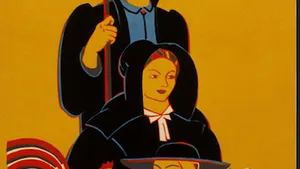Stay in the Loop
BSR publishes on a weekly schedule, with an email newsletter every Wednesday and Thursday morning. There’s no paywall, and subscribing is always free.
Tipping the presidential scale
The 2016 presidential candidates on arts funding

Thankfully, we’re down to the wire on this election, and strangely enough, I’m still coming across people who are struggling with their decision to endorse a Republican or Democratic political candidate. Most of those with whom I come into contact will happily pull the Democratic lever, and a very few are committed to seeing this Trump thing through to its conclusion, but in the shadows, there are still a few wavering on the brink of a third party vote. That’s why I want to discuss something I assume Broad Street Review readers can all agree on: Arts funding.
The contenders
I suppose nobody will be surprised that the Republican Party platform doesn’t include any mention of the arts. Of course, Donald Trump doesn’t always toe the party line, so, to that end, we can look to his private efforts at arts funding, which include using money from his charitable foundation to purchase a six-foot-high portrait of himself. I guess from that episode we can glean that he believes the arts ought to be funded by private foundations, in effect, allowing the market to decide art’s value—and by “the market,” I mean, “the wealthy,” and by “art,” I mean, whatever the wealthy believe they’d like to add to their private collections or commission for private performances.
In a similar vein, the Libertarian Party’s 2016 platform doesn’t mention the arts, and since they’re Libertarians, and as far as I can tell their enthusiasm for funding the arts seems to be mostly limited to purchasing Ayn Rand novels and constructing sculpture gardens made out of discarded parts, concrete, and/or lots of didactic signage on their own property, it stands to reason that they’re not in favor of public arts funding. And yes, Gary Johnson, who advocates ending public arts funding, is also all about legal weed, a subject dear to many artists’ hearts, but he’s a really bad advertisement for it, and should stop already before he ruins it for the rest of us.
Let’s get down to the real dilemma for most teetering liberals: The Democrats versus Greens, Hill versus Jill. The Green Party’s national platform does include a long section on the arts, which advocates for removing restrictions on artistic content and expression, increased funding for the arts, incorporation of an arts curriculum into every school, and implementation of several other very good ideas and vague policies. Jill Stein’s own policy platform mentions restoring “arts, music and recreation to school curriculums,” but that’s it, and I believe there's a real danger in specifying the arts only in the context of children.
The Democratic Party platform only includes one paragraph titled “Promoting Arts and Culture,” but unlike the other parties, they’re not afraid to name drop, and when those names include the National Endowment for the Arts and National Endowment for the Humanities, they don’t have to say much else. Keep this in mind when considering Pennsylvania’s down-ballot races; if the party’s platform favors arts funding, their candidate does too.
The clear winner
Hillary Clinton’s own website doesn’t list her arts platform, but Americans for the Arts’ Arts Action Fund does, and it is comprehensive, specific, and does what Stein’s does not: It highlights her track record on the issue. Let your friends who care about or work in the arts see what these candidates will mean for their immediate future. It seems to me that if our goals for the arts are access, inclusion, freedom of expression, and support at the highest levels of government (let's not forget that Supreme Court appointment), Clinton is the obvious choice.
Here in the swing state of Pennsylvania, that choice is especially important, and we in Philadelphia should appreciate what Clinton gets that the others don't. During a campaign visit to Buffalo, New York, she said, "The arts are a major reason for urban revitalization. You see it in cities where often times the modern pioneers are the artists." I believe you can draw a direct line from Center City's revitalization and its present restaurant boom straight back to the creation of the Avenue of the Arts. Broad Street used to be a ghost town after dark; now it has theaters, a much-expanded arts university, galleries, restaurants, newly renovated and recently built apartments and condos, an ice-skating rink, and a whole arts and culture journal named after it. But you already know that the arts matter. Don't forget that your vote does, too.
Sign up for our newsletter
All of the week's new articles, all in one place. Sign up for the free weekly BSR newsletters, and don't miss a conversation.

 Wendy Rosenfield
Wendy Rosenfield